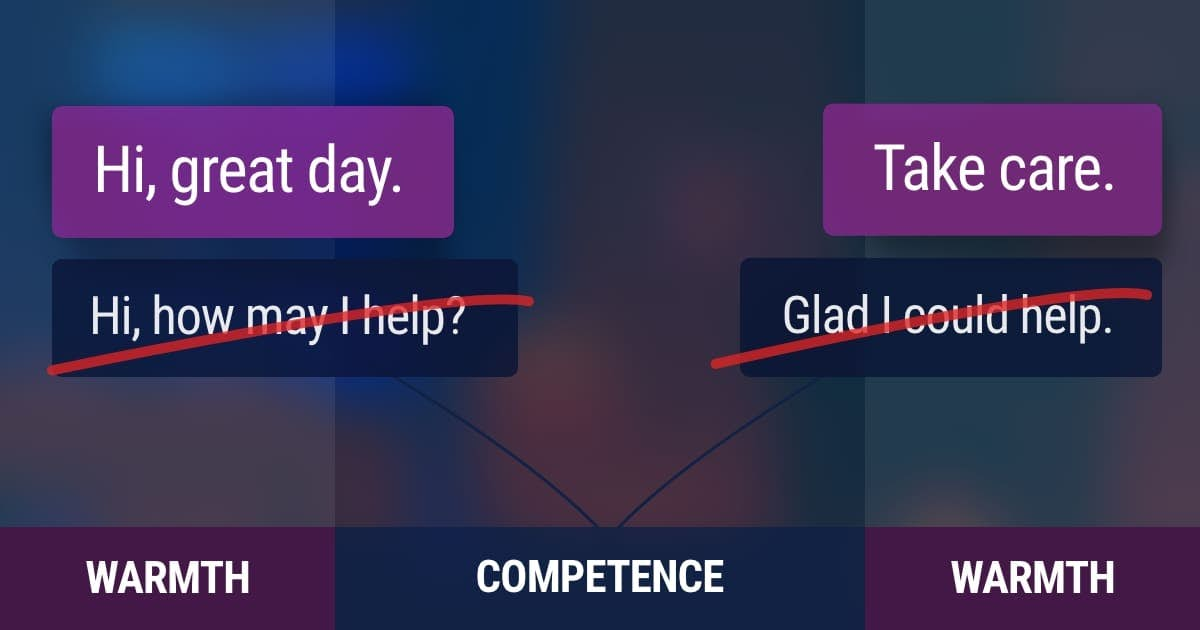Start and End Conversations in a Friendly Tone
Which trait is more persuasive in a salesperson: friendly or competent. Researchers measured each trait.

Overview
Consider a salesperson.
Which trait is more persuasive: friendly or competent.
Most salespeople pick competence. Among 160 service managers, 81% indicated that competence was more important (Packard, Li, & Berger, 2023).
But turns out, both are equally important — at different times.
Researchers analyzed 185 phone calls with customer support at a large retailer.
Customers were happier (and purchased more) when emotional words (e.g., happy, horrible) appeared at the beginning and end of conversations, while cognitive words (e.g., diagnose, think) appeared in the middle (Packard, Li, & Berger, 2023).
In a follow-up study, participants preferred a sales call that began with a warm greeting:
- How might I assist you today?
- Preferred: I hope you're enjoying this fine day?
Even though warm greetings delay the rational purpose of a call, they provide an emotional lubricant that enhances a social interaction.
Same with goodbyes:
- Take care.
- Glad I could help.
Both are polite and common ways to end a conversation, but a warmer response (e.g., take care) reinforces a communal relationship, rather than a transactional relationship.
And thanks to primacy and recency effects, these conversational endpoints influence how people conceptualize the entire interaction.
Takeaways:
- Structure Calls to Be Warm-Competent-Warm. This sequence performed better than all combinations (e.g., warm-warm-warm, comp-comp-comp).
- You Can Drop Pleasantries in the Middle. Customers want a direct and efficient conversation in the middle (vs. sucking up).
Other New Stuff
- Waiting in Line is Persuasive - Customers feel more curious, which intensifies their desire to buy.
- Some Customers Can't Wait to Pay - Researchers have argued that people are economically and psychologically motivated to delay costs. But not everyone. Some customers want to pay more money sooner (vs. less money later). Why? They want closure. Otherwise tasks would linger on their minds.
- Competitor Promotions Increase Loyalty - When customers see (and resist) a competitor promotion, they become more loyal to their current brand, spending more money with them.